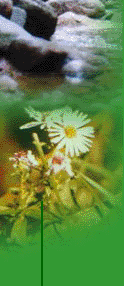You have 5 sites to visit.
#1 Pollinators Impact on crops
While this is a rather scientific article, reading it will give you some insight into the pollinators
impact on important food crops. Focus your note taking on the need for pollinators
on two important crops: corn and soybeans.
· Which crop (corn
or soybeans) benefits the most from pollinators? Support your answer with
reasons.
#2 Bees & Corn
Corn is an important food crop in the Midwest. When
you detassel, you are removing the male portion of the plant, the tassel, from the plant, leaving behind the female part of
the plant, the silk and ear. Take a look at a cornfield or better yet, take a
walk into a field, have you noticed any colorful flowers? I hope not, because
the corn plant does not produce colorful or fragrant flowers, even though it is a flowering plant.
· Does the corn
plant rely on insect pollinators like the honeybee?
· Predict how you
think the corn crop will be affected with the extinction of the honeybees. Explain.
#3 Pollinator Populations
Are insect pollinators declining in population? Evidence
suggests that some populations of pollinators are diminishing. The US Fish and Wildlife Service lists over 50 pollinator species
as threatened or endangered.
· Why is the economic
impact of the loss of pollinators difficult to predict?
#4 The Truth about the Birds and the Bees.
The article titled The truth about the Birds and the Bees gives an explanation of the economic
impact of losses of honeybees for food crops. The cost of declining honeybee
populations is estimated at $5.7 billion to food crops every year in the U.S. This author does not seem terribly concerned about the declining bee populations.
· The author makes
this statement But the future for pollinators is not entirely bleak. Why is an
extinction of honeybees not death sentence for food crops?
#5 Pollinators and other crops
You will be amazed at the list of food plants grown in
the Midwest that are pollinated by bees.
· Why
are the fruits of food crops like strawberries larger when pollinated by bees?




